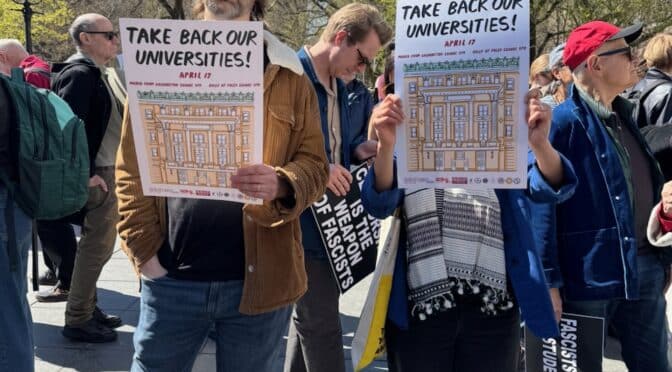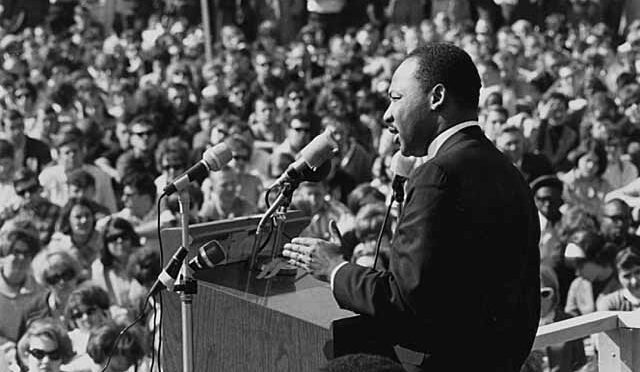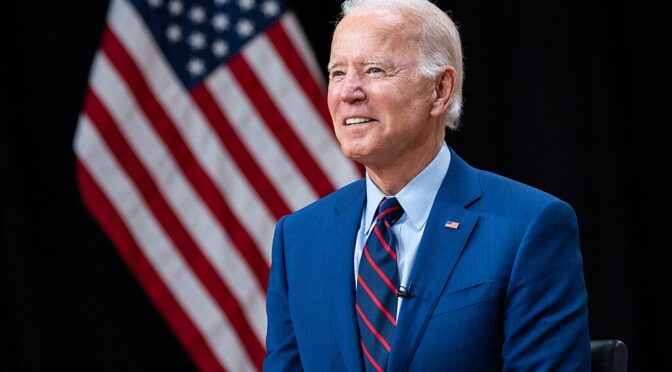by Tom Dunkel
President Trump and White House officials understandably bridle at any parallels drawn between this administration and Nazi Germany, whether it be something as serious as I.C.E’s SS-like arrest tactics or as trivial as Deputy Chief of Staff Stephen Miller’s perpetual death-camp-commandant scowl. Still, uneasy echoes of the past keep reverberating. It turns out even Mr. Trump’s Big Beautiful Birthday Parade has, yes, a Nazi antecedent: Adolf Hitler has been there, done that. Twice.
On April 20, 1936 the Führer decided to throw himself a very public forty-seventh-birthday bash that doubled as a coming-out party for a German army just beginning to emerge from the shell of its humiliating World War I defeat. The sweet perfume of renewed national pride hung heavy in the air. The streets were alive with the sound of storm troopers raising their voices in unison. “Today we own Germany,” they sang. “And tomorrow the whole world.”
Uh oh.
The New York Times’ Frederick T. Birchall was on hand and reported that 15,000 officers and soldiers; 1,500 vehicles; 1,000 horses; and 350 tanks coursed through center-city Berlin. “As rank after rank of armored cars, filled with rifleman; motorcycles, machine-gun companies, whippet tanks, howitzers, field guns and anti-aircraft batteries with searchlights and direction finders passed three abreast at the speed of ordinary taxicabs,” he wrote, “the newly acquired might of Germany took on a new aspect in the minds of the onlookers. What was seen today was a war machine built to fight, not parade.”
Germans lining the parade route cheered. An American who happened to be in Berlin on business drank in the spectacle more cautiously. “It makes you think,” he said, “but what I am thinking is, why put together a thing like this if it isn’t going to be used?”
Hitler, of course, was already thinking along those same lines. Seven months later, on November 5, 1937, he summoned his senior military commanders to a conference room inside the Reich chancellery. Seated around a large oak table were Foreign Minister Konstantin von Neurath, General Werner von Fritsch (Commander in Chief of the Army), Field Marshal Werner von Blomberg (Minister of War), Admiral Erich Raeder (Commander in Chief of the Navy), and Reichminister Hermann Goering (Commander in Chief of the Air Force). Rarely at a loss for words, Hitler prattled on for four hours. The gist of his message was that a resurgent Germany needed lebensraum, room to grow and prosper. For now, he had his eye on nearby Austria and Czechoslovakia, and if they had to be absorbed into the Reich by force, well, so be it. “Every generation needs its own war,” he told his commanders, “and I shall take care that this generation gets its war!”
Three months later, Hitler, who failed to advance beyond the lowly rank of corporal while serving in World War I, appointed himself supreme commander of the armed forces. Five weeks after that Germany invaded Austria. A small group of anti-Nazi conspirators in the upper levels of the military and government began plotting against Hitler. They managed to make direct contact with Britain’s chief diplomatic adviser, with Foreign Secretary Edward Wood, Lord Halifax, and with a Conservative backbencher in Parliament; one Winston Churchill, who advised “bring us Hitler’s head.”
The conspirators intended to storm the Chancellery and take Hitler into custody if he dared to push on into Czechoslovakia. However, that plan was made moot when Germany, Britain, France, and Italy conspired to sell out the Czechs by negotiating the infamous Munich Agreement in September 1938, which gave Hitler the industrial Sudetenland he so craved; 11,000 square miles of terrain taken without firing a single shot. British Prime Minister Neville Chamberlain crowed about how this “peace with honor” would guarantee the long-term stability of Europe.
In October Raymond Geist, a U.S. consul officer stationed in Berlin, sent a memo to Under Secretary of State George Messersmith in Washington, poking holes in Chamberlain’s rosy vision of the future by declaring “There is nothing to be optimistic about. The dictators have won.” He further noted “thousands of desperate people”, most of them Jews, were continually streaming into the consulate, literally begging at times for visas to escape Nazism. “It is a terrible situation and the plight of the Jews in the country is going to get worse.”
Geist had been posted in Berlin since 1929. A refined gentleman built like a defensive tackle, he earned a doctorate in philosophy at Harvard, spoke seven languages, and knew which palms to grease within the Nazi bureaucracy in order to secure a visa for somebody in a life-or-death pinch. An astute observer of German culture and politics, Geist took an unflinching, contrarian view of Hitler’s rise to power. Back in December 1935 he sent a prescient memo to one of his State Department superiors, arguing that it was simplistic to believe Adolf Hitler was imposing his iron will on a terrified, “liberty-loving” citizenry. To the contrary, the drift toward dictatorship was an expression of a warlike “national temperament” and “national aspirations”. This was two willing dance partners engaged in a perverted tango. Conventional wisdom had things backward, said Geist. “Germany is Hitlerism, rather than Hitler is Germany.” (Hmm. Some may detect another Trump administration parallel.)
A few weeks after Geist predicted life for Jews in Germany would “get worse”, it indeed did. Early November 1938 brought what became known as “Kristallnacht”, a two-day, anti-Semitic rampage that saw SS storm troopers, Hitler Youth, and assorted vigilantes destroy 267 synagogues and 7,500 Jewish businesses. Homes were burned, ninety people murdered and, per Hitler’s orders, more than 26,000 Jews carted off to concentration camps. In protest, President Franklin Roosevelt recalled U.S. Ambassador Hugh Wilson to Washington.
A frazzled Raymond Geist wrote another memo to Assistant Secretary of State George Messersmith, saying he went to work every day “with a heavy step” because of all the accumulated misery demanding his attention. A 78-year-old Jewish woman had lost everything she had, including her apartment. Geist went into full protection mode. “I am looking after her like a child. They may not touch a hair of her. She is getting a visa for America.” His landlady’s husband was due to be transported to a concentration camp. Geist asked Hermann Goering for a favor and got his name taken off the list.
In mid-March 1939 the anxiety level in Germany got ratcheted up another notch. All men of fighting age had been ordered to report for draft physicals. Hitler then reneged on the Munich Agreement, sending troops into Czechoslovakia and taking control of virtually the entire country. On April 15 Roosevelt sent a telegram to Hitler that contained a list of 31 countries, mostly all of Europe. He asked for “assurance” that Germany would not attack any of them. The Fuehrer took offense to that request and, five days later, indirectly responded with an in-your-face show of military muscle that the German press proclaimed the “greatest parade on earth”.
The occasion was Hitler’s fiftieth birthday celebration, which put his forty-sixth to shame. This time around it was a national holiday; everybody got the day off with pay. The two-day event began with a torchlight parade that the honoree watched from a balcony at the Reich Chancellery. He then ducked inside and was showered with gifts at a private party. SS leader Heinrich Himmler gave him an oil painting of eighteenth-century Prussian ruler Frederick the Great, Hitler’s idol.
The main parade kicked off the next morning at about 11:30. It took four hours for the procession to wind past the reviewing stand (which held 20,000 special guests) on Via Triumphalis, the new east-west highway in Berlin. It was a day filled with impressive numbers: 2 million spectators, 40,000 troops, 162 airplanes, 100 tanks – and 1 aborted assassination.
Colonel Noel Mason-MacFarlane, the British military attache in Berlin, by coincidence rented an upper-floor flat in a building directly across the street from the parade reviewing stand. A highly decorated officer and expert marksman, Mason-MacFarlane had, in all seriousness, proposed giving the anti-Nazi conspirators a hand by taking out their nemesis with a single head shot from his elevated bathroom window. “I could pick the bastard off from here as easy as winking,” he said.
Maybe so, but Foreign Secretary Lord Halifax declined the offer, explaining it was not British government policy “to use assassination as a substitute for diplomacy.” Mason-MacFarlane had to be content with attending the parade as one of Hitler’s special guests, another of whom was consul officer Raymond Geist, who signed Hitler’s 50th birthday registry as the designated representative of the United States. Ambassador Hugh Wilson was still cooling his heels in Washington, waiting for President Roosevelt to call off his diplomatic protest and send him back to Berlin.
Wilson never returned. On September 1, 1939 Nazi troops invaded Poland. Great Britain and France responded by declaring war on Germany, ushering in World War II. In early October Geist left Berlin, his home for more than a decade. One of his last official acts was to pull some strings with his German contacts to help get a Hasidic rabbi and seventeen of his family members safely smuggled out of Poland before the country fell to the Nazis.
Those lives were saved. Too many others had been lost. Between June 1933 and April 1939, 286,210 people applied for visas at the American consulate in Berlin – but because of U.S. immigration restrictions only 74,789 were granted. Delivering bad news to so many anxious faces had taken its toll on Raymond Geist. A note in his personnel file said that “in danger of a breakdown in health he was transferred” to Washington and named chief of the State Department’s Division of Consumer Affairs. A desk job.
Nobody threw him a parade.
EN





